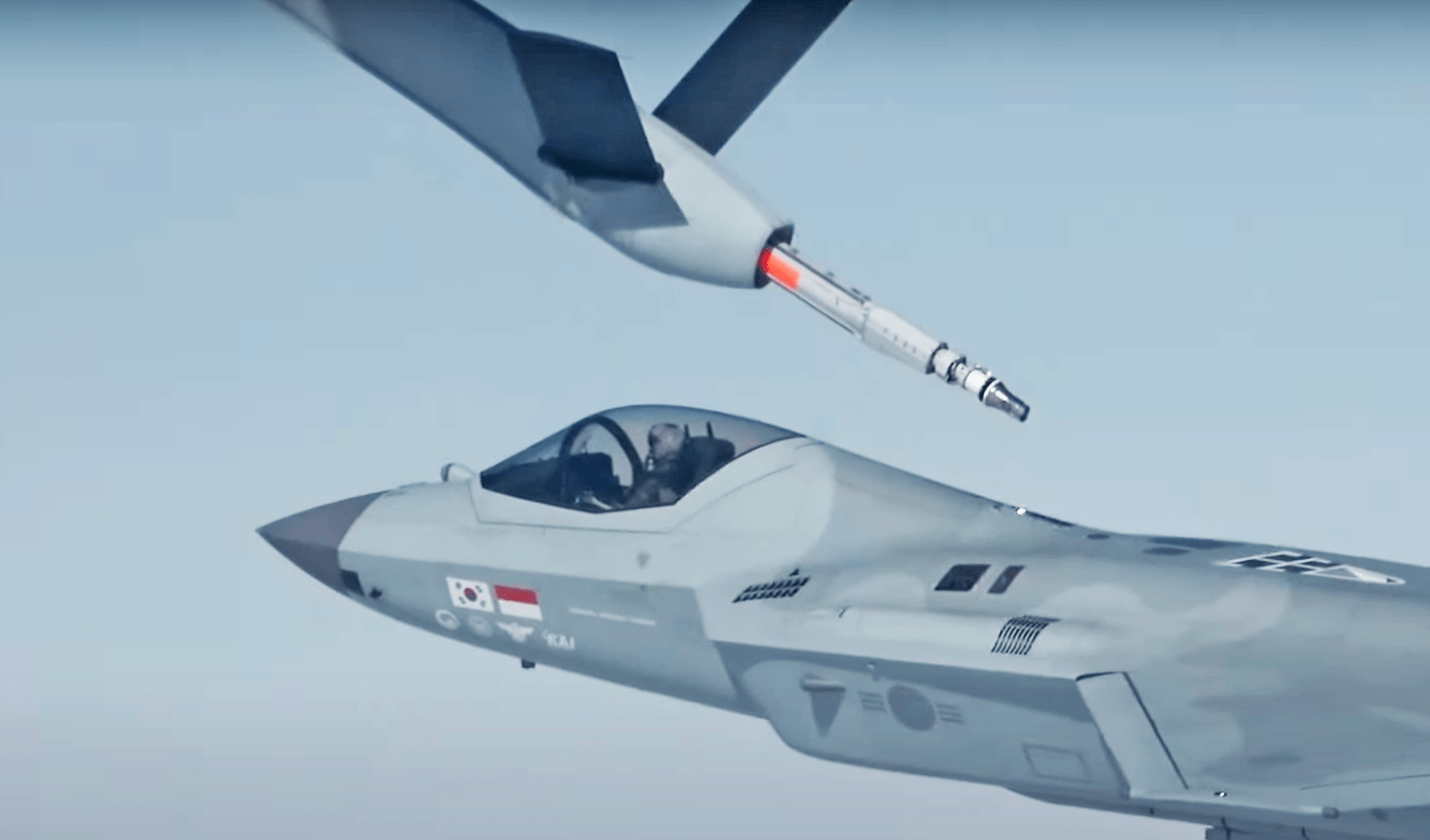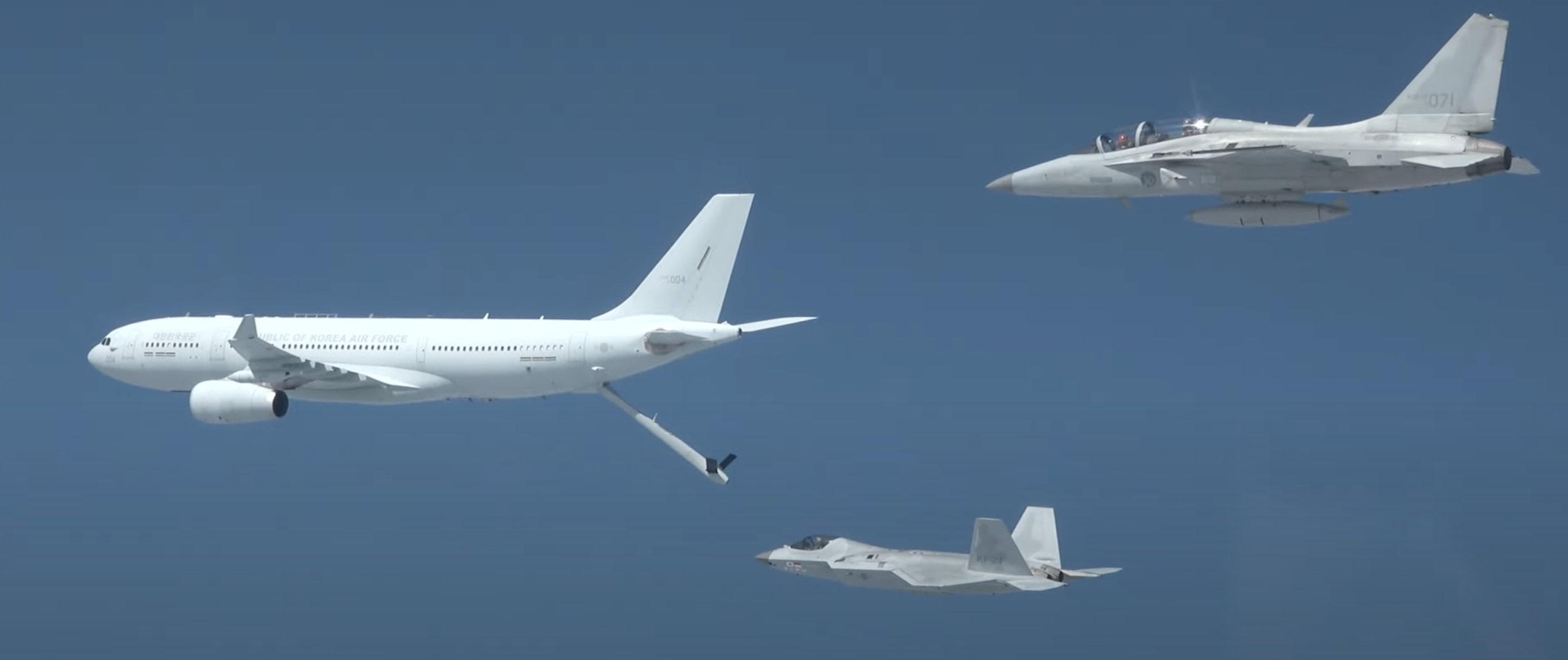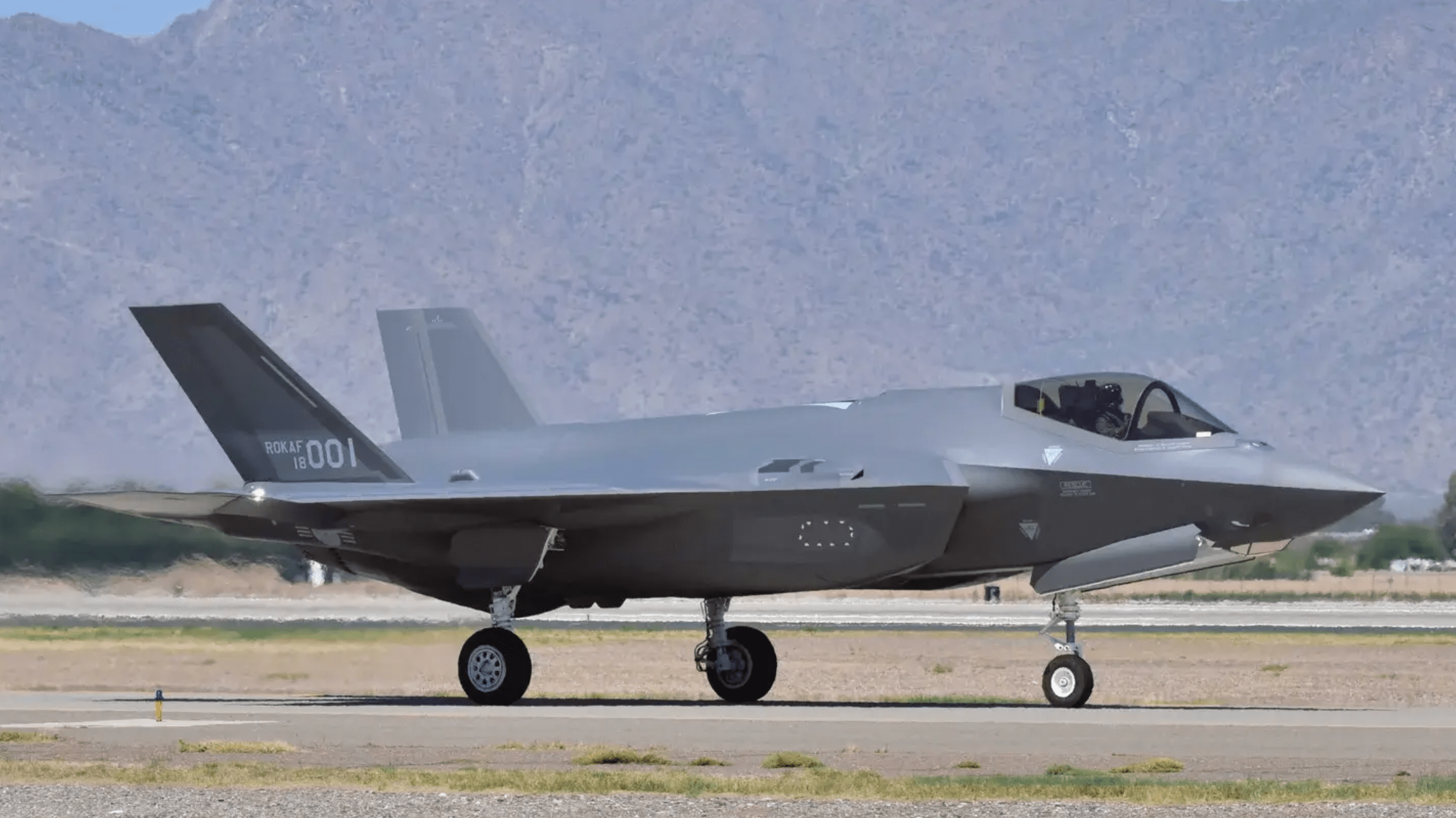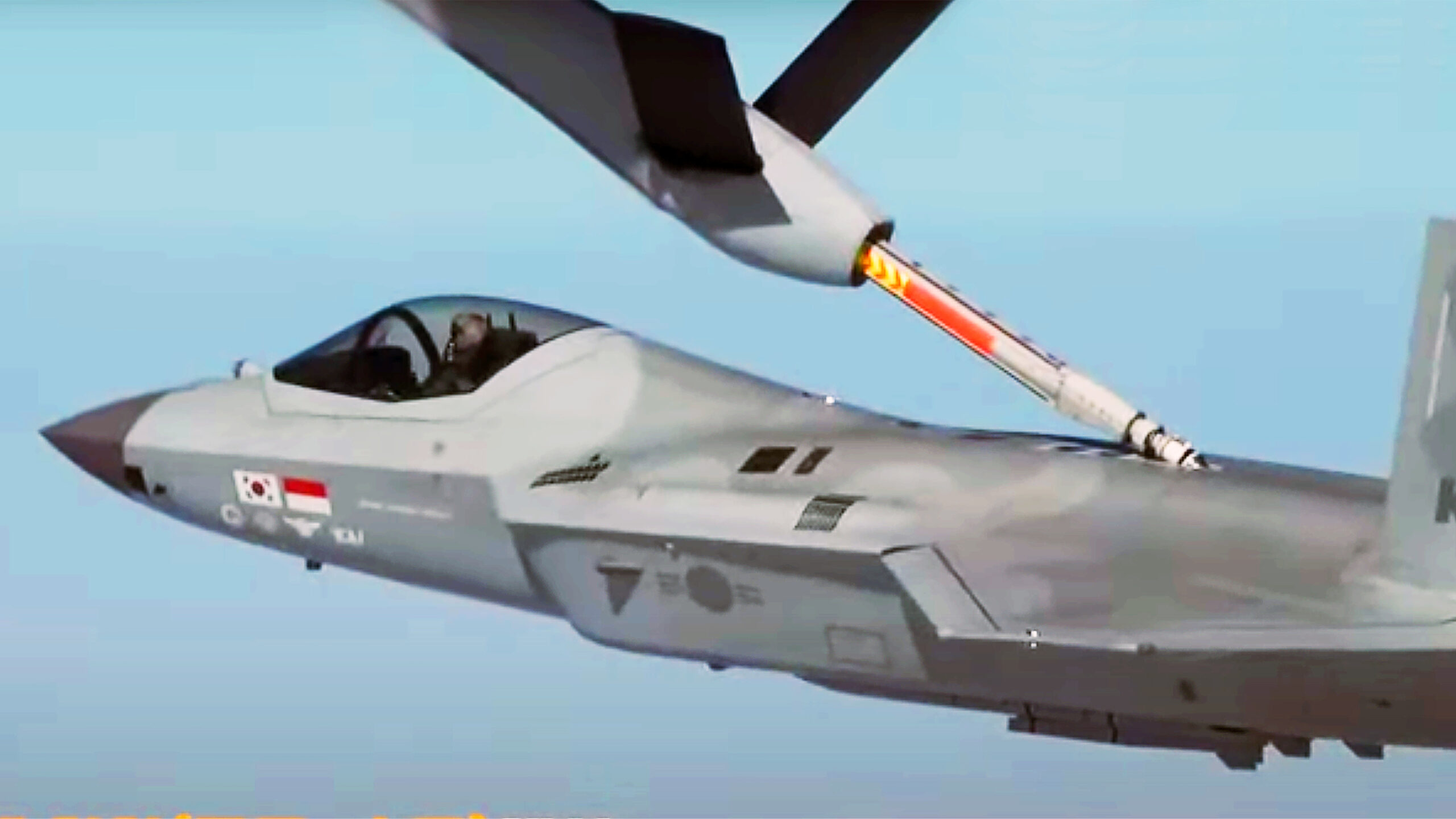South Korea’s locally developed KF-21 Boramae next-generation fighter program continues to advance at an impressive pace, the latest milestone involving the first air-to-air refueling trials, a little more than 18 months after the prototype first flew, an event you can read about here. Meanwhile, six prototypes — including a two-seater — have been completed and there are plans to deliver a first production example to the Republic of Korea Air Force (ROKAF) in the second half of 2026.
The Defense Acquisition Program Administration (DAPA), which manages South Korean defense procurement, confirmed that the first aerial refueling flight test of the KF-21 took place today, involving the fifth KF-21 prototype. The aircraft was refueled from an Airbus A330 Multi-Role Tanker Transport (MRTT), which is known in ROKAF service as the KC-330 Cygnus.

“KF-21 prototype 5 took off from the runway of the 3rd Air Force Training Wing at 9:45 a.m. today and successfully performed an aerial refueling flight over the South Sea,” DAPA said. The ROKAF’s 3rd Flying Training Wing (as it’s normally designated) is located at Sacheon Airport in the southeast of the country. Flying as a chase plane to monitor the flight was a two-seat FA-50 light combat aircraft.
An accompanying video shows the flight test, in which the KF-21 connects with the tanker’s refueling boom before successfully uncoupling. A statement from the South Korean Ministry of Defense is ambiguous as to whether actual fuel was transferred, but that would be unusual for the first test of this kind.

“During the flight test, the DAPA focused on confirming and evaluating the impact of turbulence occurring behind the aerial refueling tanker on control, the safety of connection and separation with the tanker, and the aerial refueling function such as fuel transfer,” the South Korean Ministry of Defense explained. The ministry also said that, once in service, a single aerial refueling ‘hookup’ is typically expected to increase the operational radius of the KF-21 by at least 50 percent.
“The success of this aerial refueling flight test is significant in that it can expand the operational radius and operating time of the KF-21, contributing to securing the Air Force’s long-distance operational capabilities as well as strengthening its military power,” said Noh Ji-man, head of the Korea Fighter Program at the DAPA.

More refueling trials will follow, with DAPA working to ensure that fuel can be transferred from the tanker to the KF-21 across different parts of the flight envelope, including different altitudes and speeds, in the course of around 60 test sorties.
This is part of a broader flight-test program that is aimed to be wrapped up in the first half of 2026. If successful, then the first examples of production KF-21s should be handed over to the military before the end of the same year.
This comes after the program was formally launched in 2016 (although preliminary studies date back at least to 20012), followed by the roll-out of the first prototype in April 2021, and the first flight in July 2022. In May last year, the KF-21 was provisionally judged “fit for combat.”
A video showing the first flight of the KF-21 in July 2022:

By any measure, this is an extremely rapid development schedule, even more so for a next-generation fighter program for that are notoriously prone to delays as well as cost overruns.
That’s not to say that there won’t be more hurdles ahead for the KF-21 — the status of Indonesia as a partner in the program has already been problematic — but its tempo so far reflects the very particular approach that South Korea has taken to developing a homegrown fighter.
Rather than attempting to create a fifth-generation fighter with all of the advanced features and capabilities that this entails, DAPA describes the KF-21 as a “4.5-generation fighter jet,” using nomenclature that’s more commonly used to define the new or significantly modernized fighters that appeared from the 1990s onward.
Compared to a fifth-generation fighter, the KF-21 does not incorporate stealth as a primary design driver and its sensor fusion will be notably less advanced than found in the F-35, for example.

With an urgent requirement to replace aging F-4E Phantom IIs as well as F-5E/F Tiger IIs, the designs of which date back to the late 1950s, Seoul has instead opted for a fast-track route to a new-generation fighter. At the same time, the ROKAF is receiving a true fifth-generation fighter in the form of the U.S.-supplied F-35A stealth fighter.

Despite the “quick-fix” nature of the program, the KF-21 will be fielded, from the outset, with an active electronically scanned array (AESA) radar and infrared search and track (IRST). Its armament will also include beyond-visual-range MBDA Meteor air-to-air missiles with ramjet propulsion and locally produced long-range cruise missiles.

Thereafter, however, there are plans to refine the fighter, with the so-called Block 2 configuration expected to include a broader application of low-observable characteristics, including internal weapons carriage and a wider range of air-to-ground missions.
South Korea is also envisaging having its KF-21s work closely with homegrown stealth drones, as a means of boosting the potential of the crewed fighter as well as maximizing “combat mass.” In this regard, developing a two-seat version could have particular benefits, with the rear cockpit accommodating a dedicated drone controller. You can read more about the concept here.


The end result, as we have described before, may very well be something like a “4.75-generation” fighter, offering many of the advantages found in a fifth-generation type, but (hopefully) evading the enormous costs and lengthy development time normally found in aircraft in that category.
Central to the KF-21 is its local development and, bearing in mind the speed with which the program is progressing, it’s highly likely that it will also be offered for export by manufacturer Korea Aerospace Industries (KAI) as soon as it’s available. In this field, the KF-21 should benefit greatly from the fact that the majority of its avionics subsystems are locally developed, so free from potential export restrictions, although the engines are U.S.-supplied General Electric F414-GE-400K turbofans, meaning that Washington could block potential foreign sales.

KAI has already achieved notable export success with its T-50 Golden Eagle family, which began life as an advanced jet trainer before spiral development produced the armed, radar-equipped TA-50 and then the FA-50 light combat aircraft. More recently, KAI has pitched a single-seat version of the FA-50, fully optimized for operational use rather than training and likely drawing upon KF-21 technologies. Among the customers for the Golden Eagle series is Poland, which acquired 48 examples of the FA-50, specially tailored to its requirements, with the initial batch being diverted from local orders so they could be delivered at remarkably quick measure.

KAI
Certainly, South Korea and KAI will hope to build on the success of the T-50 series and the KF-21 looks to be an attractive export prospect. On the other hand, it will arrive in what is fast becoming a more crowded marketplace, with rival fighters potentially on offer from China and Turkey, as well as more advanced offerings waiting in the wings from Europe.
The aforementioned issues surrounding Indonesian involvement in the KF-21 could still threaten to disrupt the program. Indonesia has a 20 percent stake in the first phase of the program and was expected to buy 50 KF-21s but there have been payment delays and alleged corruption, while Jakarta has also repeatedly looked at other fighters — including buying them. Were Indonesia to leave the KF-21 program, South Korea may well become more dependent on other foreign orders, or face a funding shortfall.
Once again, today’s debut aerial refueling sorties for the KF-21 is an important milestone as well as another statement of intent for an ambitious, fast-moving program. While there will surely be more obstacles to overcome, the Boramae seems to be progressing well and, if it meets expectations, it may well emerge as an attractive alternative to the F-35. To be sure, it won’t offer the same all-around capabilities, but it could be notably cheaper, while KAI has already established itself as a reliable supplier of combat aircraft and one that can deliver them rapidly.
Contact the author: thomas@thewarzone.com
